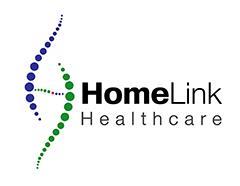Freeing up space in hospitals is a key consideration for all trusts as they try to increase the amount of elective patients they can admit, in line with the elective care recovery plan.
Many hospitals have struggled to discharge patients who no longer need medical or nursing care but who do require domiciliary care or a place in a residential home. Even where trusts have worked closely with councils, these delays have persisted.
Some patients will be suitable for discharge with just a social care package in place and the support of primary care professionals. But are there other patients who could be discharged to their own home with nursing and allied health professional support? Obviously community healthcare teams can potentially be involved in the care of some of these patients but may not have the capacity to cope with all of them.
Sponsored by
An HSJ webinar, sponsored by HomeLink Healthcare, looked at the opportunities to care for more patients in their own home and reduce some of the pressures on hospital beds.
Helen Buckingham, director of strategy at the Nuffield Trust, said that hospital capacity was currently challenged, both in elective and emergency care. “Getting that flow through the hospital, getting patients who are ready to be discharged back home with the right support as soon as possible is really important for keeping the elective recovery going. But it is even more important for patients and their families,” she said.
While there had been a focus on the issues around discharging people to social care, there had been less focus on the important role community health services played in supporting people after discharge, she added.
Matthew Winn, chief executive of Cambridgeshire Community Services Trust and national director for community services, said what had changed was less the number of people delayed but the length of time each of them was delayed – now up to 15 days per person. There were also delays in community rehabilitation.
“I would say some of the non-recurrent funds we have put in means that people have planned on a short-term cycle,” he said. Lots of systems had been over-reliant on bedded care – with spot purchasing of care beds – rather than getting people home, he added. But there was also a need to ensure people were supported to recover as much health and independence as possible.
“I think we have lost both the art and the focus on proper rehabilitation and recovery services,” he said.
Andy Collett, head of business development at HomeLink, said there was a cohort of people who could be discharged from an acute and receive hospital type care at home. These were distinct from those who might just need social care or primary care input once discharged.
“Separate out the patients who can be discharged and become the responsibility of primary care and those with higher more complex needs who can be treated while still under the care of the hospital consultant but that care can be moved to a home setting,” he said.
Mr Collett said that technology could give confidence to those patients that they were being monitored but also to hospital staff who were moving slightly more acutely ill patients into a home setting. He described it as almost a new specialism for staff where the level of care needed could change over time.
Mr Winn said that virtual wards and hospital at home should be used to help clinical teams discharge someone earlier who would otherwise have remained in hospital. “We talk about discharge as if it was a finite thing but lots of areas are blurring those boundaries….to talk about care models where people are reaching out and reaching in,” he said.
A key issue around supporting patients at home is managing and accepting risk. Shared care arrangements needed clarity around clinical accountability, said Mr Collett.
“Having a really tightly defined clinical governance model is absolutely essential,” he said, This could include escalation procedures for patients which could mean they were readmitted if necessary. His model had people working in hospital alongside NHS staff, which helped to minimise any chance of patients falling into gaps, and a 24/7 clinically staffed phone line.
Ms Buckingham said there was a historical difference between clinicians working in hospital and those in the community. “The thing for me is about enabling teams to develop their skills and understanding of life through the eyes of the patient and what managing risk means through the eyes of the patient,” she said.
But what is needed to ensure more people – and potentially those who are sicker – are cared for at home? Obviously staff with the right skills are critical but many community providers are facing staff shortages, said Mr Winn. And they are already caring for people with greater needs than in the past.
“One of the areas we do need to work through with our home carer providers is that the NHS pays a higher level for a similar level of work,” he said. If the NHS employed more of these people, it had to make sure it was not robbing Peter to pay Paul.
“We will fail on a local basis if we just recruit to the NHS and the domiciliary and home care sectors get even worse…in their recruitment issues,” he said.
“The most important thing for people who join us is the ability to focus entirely on patient care. We have always ensured that we don’t dip into the same pool as the NHS,” said Mr Collett. The company sought to recruit people who had worked in the NHS but were not working there at the moment.
Making sure staff had the right skills is critical, said Ms Buckingham. Technology could supplement face-to-face and hands-on care but was not a substitute for it: the workforce of the future needed to be able to use technology effectively to support that care.
“We need to sort out rehab and recovery services,” said Mr Winn, adding that the intermediate care strategy was about to be reviewed and rewritten. “We have to have a policy and approach and professional movement which really celebrates and succeeds in getting more people to be cared for at home,” he said. He warned of problems going forward with home care and its ability to recruit sufficient staff– meaning that there was an additional imperative to maximise people’s recovery and independence.
Over the past few years there has been a move towards more integrated local systems – culminating in the statutory roles of integrated care systems. Ms Buckingham said many leaders now saw their role as leading organisations within a system.
“I think integrated care boards will make a difference but at the heart of it we need providers to do things differently among themselves,” said Mr Winn.. “The ingredients are all there but the hard work is making it happen.”
And Mr Collett had seen a gradual change over the years from discussions about home-based care just involving providers to ones where commissioners were also involved. ICBs might be keen to spread learning where an initiative had worked in one area – this had been the company’s experience in Norfolk and Waveney where it had initially worked with one trust and seen this spread to others across the patch, he added.
A recording of the session is now available.
For those who had previously registered for the webinar, click here.
For those who have yet to register, please click here and complete the form at the foot of the page. Details of how to access the on demand recording will then be sent to you via email.


























